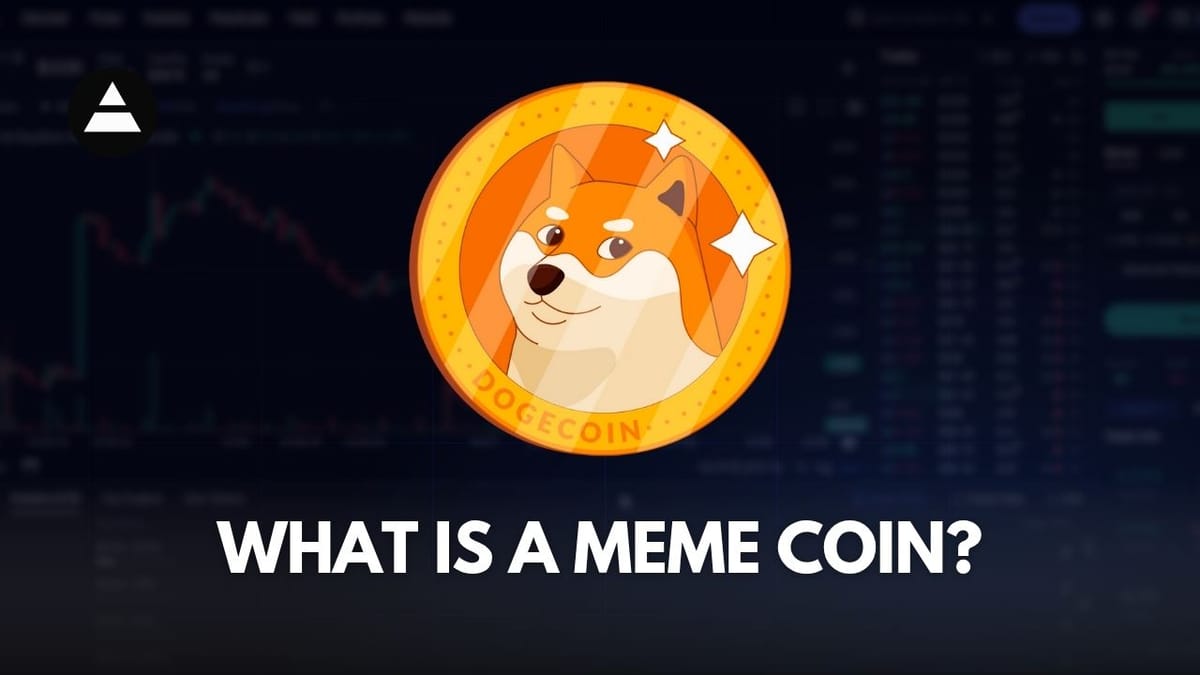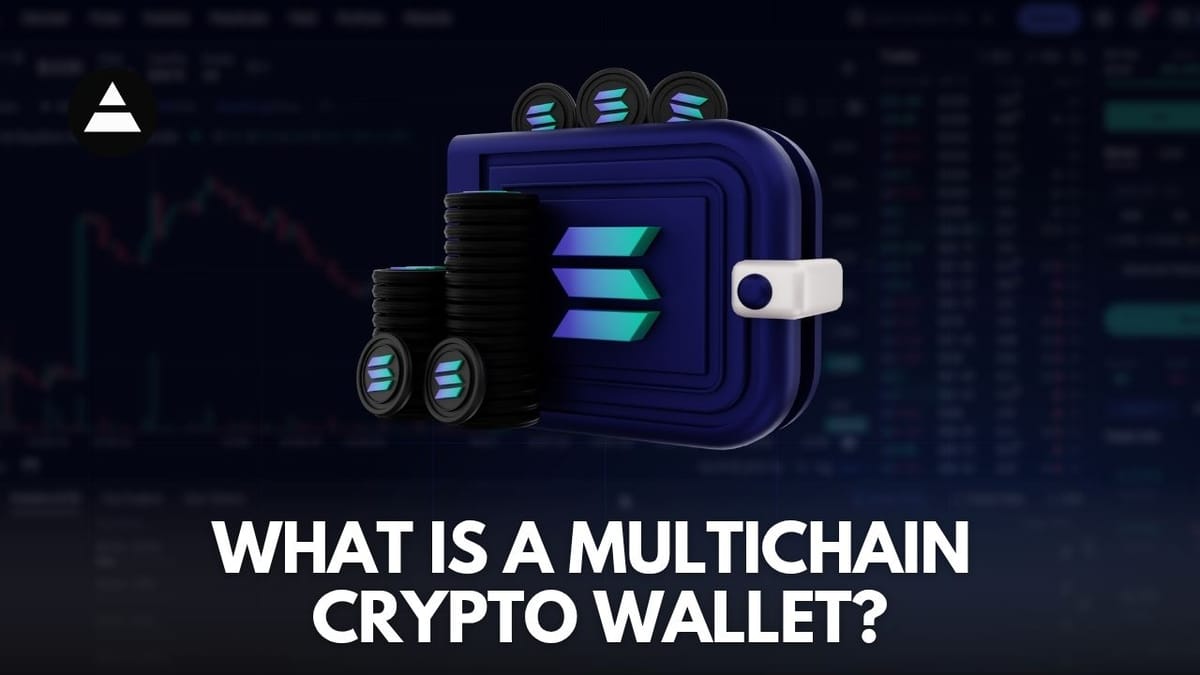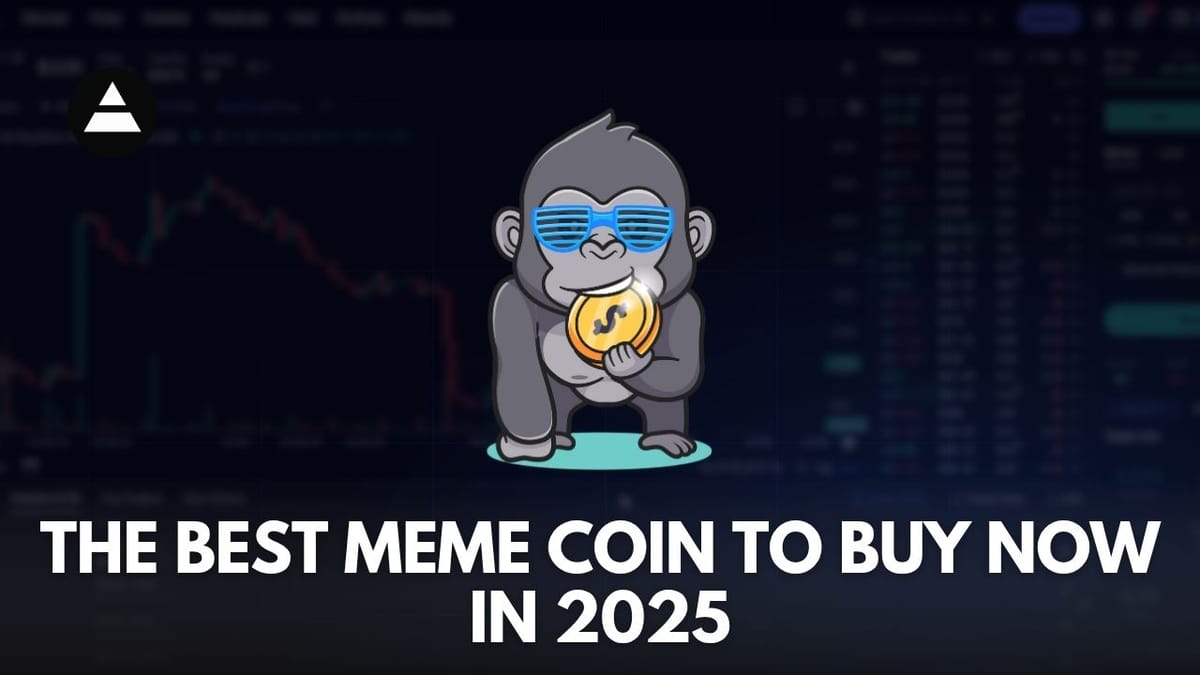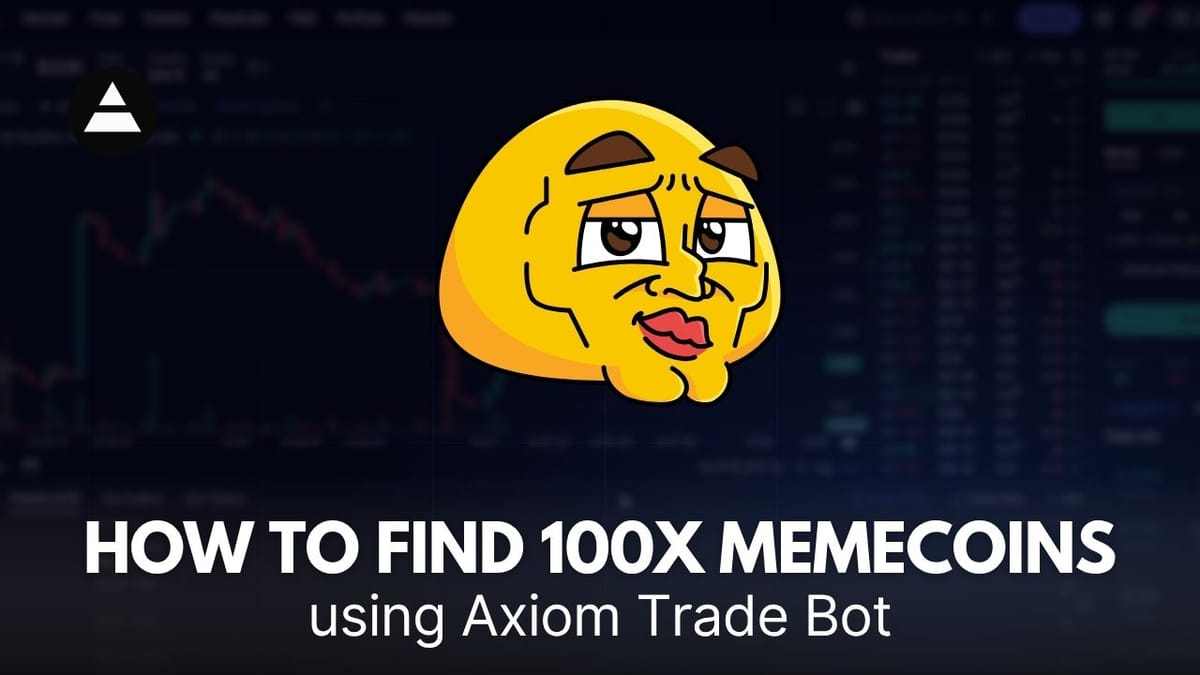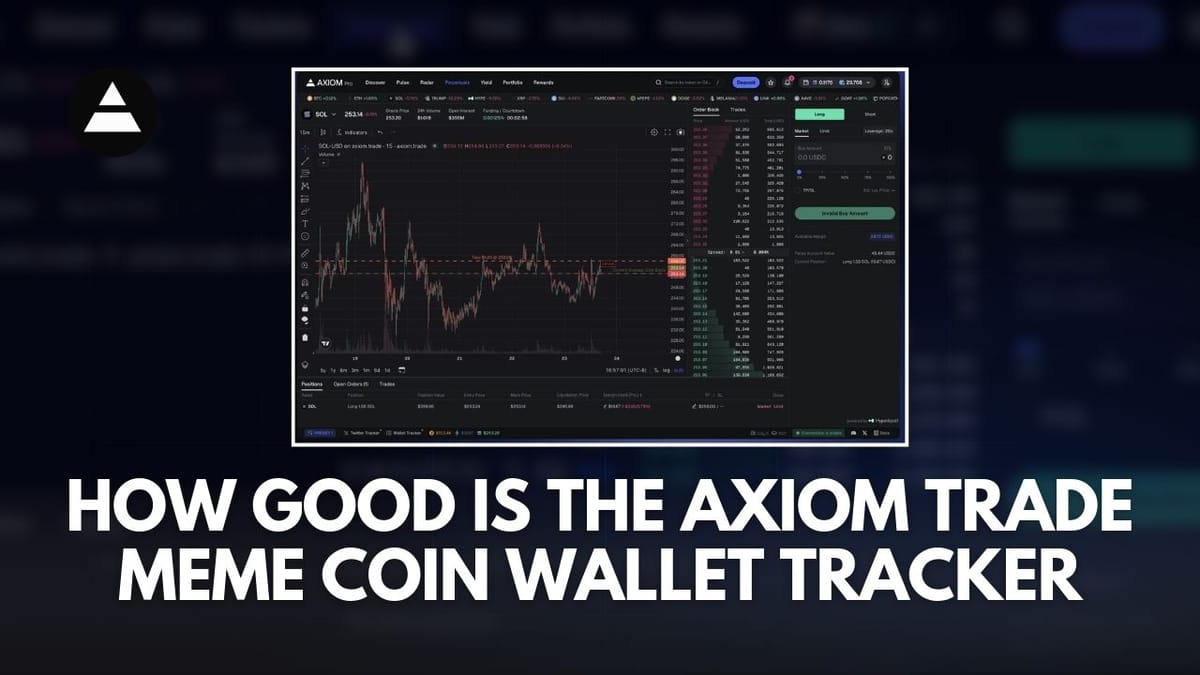What Is Solana (SOL) and How Does SOL Crypto Work?
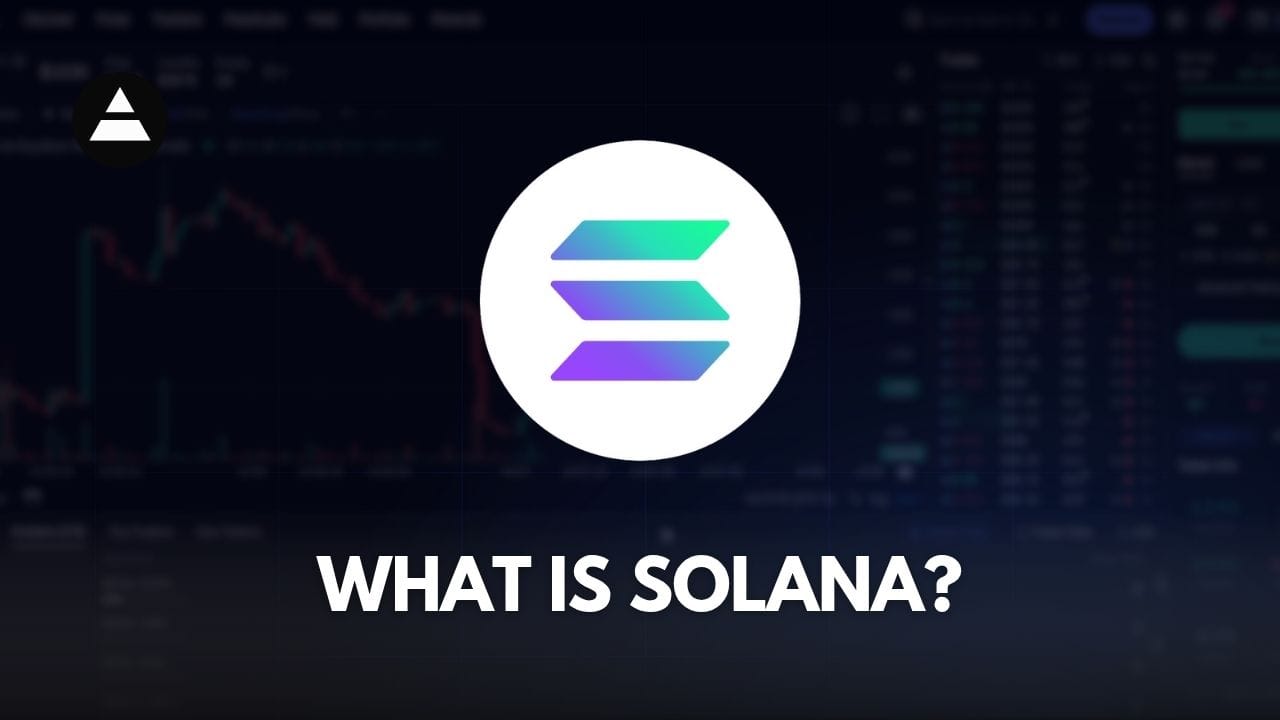
So, you've heard about Solana (SOL) and are wondering what all the fuss is about? Well, you're in the right spot! This article will break down what Solana is, how its crypto works, and why it's become such a talked-about player in the digital currency world. We'll cover everything from its beginnings to how people are using it today, especially for solana crypto trading. Let's get into it.
Key Takeaways
- Solana is a blockchain platform made to run decentralized applications that can handle a lot of users.
- It can process way more transactions per second and has lower fees compared to other blockchains like Ethereum.
- Solana uses a special method called Proof-of-History (PoH) to make sure transactions are recorded in the right order and quickly.
- The value of SOL tokens depends on how many people use the network and how much demand there is for it.
- You can earn money with SOL through things like trading, holding it for a long time, or staking your tokens.
Understanding Solana's Core Principles
The Genesis of Solana
So, Solana came about because Anatoly Yakovenko, who wasn't even that into crypto at first, had this idea back in 2017. He was messing around with Bitcoin's SHA-256 hash function and realized it could be used to create decentralized clocks on a blockchain. This was a lightbulb moment because he understood that timestamped transactions could seriously boost network scalability without messing with the decentralized nature of the blockchain. He named the crypto after Solana Beach in California, which is a cool little detail. The project quickly got the attention of some big investors, which helped get things off the ground. It's interesting how a simple experiment led to the creation of a blockchain that's now giving Ethereum a run for its money. You can learn more about the foundational elements of Solana development online.
Key Characteristics of SOL
Solana's native coin, SOL, is designed to power dApps and trading platforms that need to be fast, secure, and scalable. The main goal was to create a protocol that's easy to use and has high bandwidth. Scalability is a big deal, and Solana aims to handle a ton of transactions without slowing down. Plus, they're working on making it more user-friendly, which is something a lot of blockchains struggle with.
Here's a quick rundown of some key characteristics:
- High transaction speeds
- Low transaction fees
- Scalability
- User-friendly design
Solana is designed to be a high-performance blockchain, capable of processing thousands of transactions per second. This makes it suitable for applications that require fast confirmation times, such as decentralized finance (DeFi) and online gaming.
Solana's Architectural Innovations
Solana stands out because of its unique architecture. The most important innovation is Proof-of-History (PoH), which is like a cryptographic clock that helps the network agree on the order of transactions. This is different from other blockchains that use Proof-of-Work or Proof-of-Stake. PoH allows Solana to achieve much faster transaction speeds. They also use other optimization tools to improve performance. It's a pretty complex system, but the goal is simple: make the blockchain faster and more efficient. Solana's architecture is designed to support a wide range of applications, from DeFi to NFTs, and its innovative approach to consensus is what sets it apart from many of its competitors.
The Technology Behind Solana's Speed
Solana's speed is a big deal, and it's not just marketing hype. It's built right into the core of how the blockchain works. They've come up with some clever solutions to common blockchain bottlenecks. Let's break down the key tech that makes Solana so fast.
Proof-of-History Explained
Okay, so Proof-of-History (PoH) is the heart of Solana's speed advantage. Most blockchains rely on validators communicating to agree on the order of transactions, which takes time. PoH is like a built-in clock that timestamps transactions, so validators don't have to spend as much time coordinating.
Think of it like this:
- Traditional blockchains: Everyone needs to agree on what time it is before starting a race.
- Solana's PoH: Everyone has a synchronized watch, so they can start the race at the same time without asking.
This "clock" is created using a verifiable delay function, which is a fancy way of saying it takes a specific amount of time to compute, and that computation can be easily verified by others. This allows for faster transaction ordering and consensus.
Transaction Processing Efficiency
Solana doesn't just rely on PoH. It uses a bunch of other innovations to speed things up:
- Sealevel: This lets the network process many transactions at the same time.
- Pipelining: Optimizes how data is processed, making things faster.
- Cloudbreak: Improves how data is read and written to storage.
- Turbine: This is how transaction data is transferred across the network, broken down into smaller packets for faster transmission.
Solana's architecture is designed to handle a high volume of transactions with minimal delay. It's like a well-oiled machine where each component is optimized for speed and efficiency.
Scalability and Decentralization
Solana aims to be both scalable and decentralized, which is a tough balancing act. Scalability means the network can handle more transactions without slowing down. Decentralization means no single entity controls the network.
Solana uses validator clusters, where groups of validators work together to process transactions. This helps to distribute the workload and improve scalability. While Solana boasts impressive transaction speeds and low fees, some argue that its focus on speed has come at the expense of decentralization. The hardware requirements for running a validator node are relatively high, which could limit the number of participants and potentially lead to centralization over time. It's a trade-off they're constantly working on improving.
The Solana Ecosystem and Its Utility

Solana isn't just about fast transactions; it's a whole world of applications and possibilities. It's like a digital city where different services and tools are built on the same foundation. Let's explore what makes this ecosystem tick.
Applications of SOL Tokens
SOL, the native token of the Solana blockchain, has many uses. It's not just for trading! Think of it as the fuel that keeps the Solana engine running. Here's a few ways it's used:
- Transaction Fees: You need SOL to pay for transactions on the network. Because the fees are so low, it makes even tiny transactions practical.
- Staking: You can stake your SOL to help secure the network and earn rewards. It's like putting your SOL to work.
- Governance: In some projects built on Solana, SOL holders can participate in governance decisions, influencing the future of the project.
SOL is the lifeblood of the Solana network, powering everything from simple transactions to complex decentralized applications. Its versatility makes it a key component of the ecosystem.
Decentralized Application Hosting
Solana is designed to host decentralized applications (dApps). These are applications that run on the blockchain, meaning they aren't controlled by a single entity. This opens up a world of possibilities, from decentralized finance (DeFi) to social media platforms. Solana's speed and low fees make it an attractive platform for dApp developers. Think of it as a fertile ground for innovation.
Smart Contract Capabilities
Smart contracts are the backbone of many dApps. They are self-executing contracts written in code and stored on the blockchain. Solana supports smart contracts, allowing developers to create complex and automated agreements. This is what enables things like DeFi protocols, NFT marketplaces, and other innovative applications. Solana's smart contract capabilities are comparable to smart contract platforms like Ethereum, but with the added benefit of faster transaction speeds.
Factors Influencing SOL's Value
Understanding what makes the price of SOL move up or down is key if you're thinking about getting involved. It's not just about the tech; a bunch of things play a role.
User Adoption and Network Demand
How many people are actually using Solana? That's a big deal. The more people using the network, the higher the demand for SOL, and usually, the higher the price goes. Think about it: if everyone's building dApps and doing transactions on Solana, they need SOL to pay for those things. This increased activity directly impacts the token's perceived value.
- Number of active wallets
- Transaction volume on the network
- Number of dApps running on Solana
Investment and Market Sentiment
What do people feel about Solana? Are they excited, scared, or indifferent? That sentiment drives a lot of the price action. Big investments from venture capitalists or positive news can send the price soaring, while negative press or regulatory concerns can send it crashing. It's all about the buzz. Keep an eye on Solana's price forecast to stay informed.
Market sentiment can be fickle. What's hot today might be old news tomorrow. It's important to do your own research and not just follow the hype.
Liquidity and Staking Impact
How easy is it to buy and sell SOL? That's liquidity. And what about staking? When people stake their SOL, they're locking it up, which reduces the available supply and can push the price up. Plus, staking offers rewards, which can attract more people to hold SOL long-term. The number of stakers helps maintain SOL's liquidity. Here's a quick look at how staking can affect things:
| Factor | Impact on SOL Value |
|---|---|
| Increased Staking | Reduced circulating supply, potential price increase |
| High Liquidity | Easier to buy/sell, more stable price |
| Low Liquidity | Harder to buy/sell, more volatile price |
- Staking APY (Annual Percentage Yield)
- Total SOL staked
- Liquidity on major exchanges
Engaging in Solana Crypto Trading
Acquiring SOL Tokens
So, you want to get your hands on some SOL? The most common way is through crypto exchanges. Think of them like online marketplaces where you can trade one cryptocurrency for another, or even use regular money to buy SOL. You'll need to create an account, go through a verification process (usually involving providing some ID), and then you can deposit funds. Once your account is funded, you can search for SOL and place an order. Another option is using online exchange services, but make sure they are reputable to avoid scams. Remember, you can't mine SOL like you can with some other cryptocurrencies.
Strategies for Earning with SOL
There are a few ways to potentially earn with SOL, each with its own level of risk and reward. One popular method is Solana staking. This involves holding SOL tokens in a wallet to support the network and, in return, receiving rewards. The more SOL you stake, the more rewards you might get. Another approach is investing, which means buying SOL with the expectation that its value will increase over time. This requires careful analysis of the market and understanding the factors that influence SOL's price. Finally, there's trading, which involves buying and selling SOL in the short term to profit from price fluctuations. This is the riskiest option, as it requires technical and fundamental analysis skills.
Navigating Market Volatility
Crypto markets are known for their volatility, and SOL is no exception. Its price can swing wildly in short periods, influenced by factors like:
- Overall market trends (what Bitcoin and Ethereum are doing).
- News and announcements related to Solana (partnerships, updates).
- Regulatory changes in the crypto space.
- The acquisition of large number of coins by major investors and partners
To manage this volatility, it's important to do your research, understand your risk tolerance, and avoid investing more than you can afford to lose. Consider using stop-loss orders to limit potential losses and take-profit orders to secure gains. Staying informed about the latest developments in the Solana ecosystem is also key. Remember, past performance is not indicative of future results.
Solana's Market Position and Competitors
Solana's Standing in the Crypto Market
Solana has carved out a significant, though volatile, space in the cryptocurrency market. It's known for its high transaction speeds and relatively low costs, which have attracted a lot of attention. However, it's important to remember that the crypto market is always changing. Solana's total current trading value was $55 billion in January 2022, but fell to around $3 billion by the end of 2022. Now, in 2023, it's back up to $7 billion. This shows how much the market can change. Solana's innovative technology keeps it in the game, but it still has to deal with the ups and downs of the market.
Comparison with Rival Blockchains
When you look at Solana compared to other blockchains, some things stand out. Ethereum is a big competitor, with a larger market capitalization and more established ecosystem. Other blockchains like Cardano and Polkadot also offer different approaches to scalability and functionality. Here's a quick comparison:
| Feature | Solana | Ethereum |
|---|---|---|
| Transaction Speed | Very High (thousands per second) | Slower (before upgrades, faster now) |
| Transaction Cost | Low | Higher |
| Consensus | Proof of Stake (PoS) with Proof of History (PoH) | Proof of Stake (PoS) |
| Ecosystem | Growing, but smaller than Ethereum | Largest, most established |
Solana's unique architecture, especially its Proof of History, gives it an edge in speed. But Ethereum's larger ecosystem and ongoing upgrades pose a constant challenge. It's a race to see which blockchain can best meet the needs of developers and users.
To understand the differences, consider these points:
- Scalability: Solana aims for high throughput from the start, while Ethereum is scaling through upgrades.
- Decentralization: Ethereum is generally considered more decentralized.
- Developer Tools: Both have robust tools, but Ethereum's are more mature.
For startups, choosing between Solana and other blockchains depends on their specific needs and priorities.
Future Outlook and Growth Potential
Solana's future is interesting. It has faced challenges, like network outages and criticisms about transparency. The project was also linked to the FTX exchange scandal, which hurt its reputation. Despite these issues, Solana has shown resilience. The community has come together, and new services are helping to rebuild trust. The number of developers working on Solana is growing, and there's more money flowing into DeFi projects on the platform. Plus, you can now create NFTs on Solana, which is a good sign.
Here are some factors to watch:
- Technology advancements: Continued improvements to the network's stability and scalability.
- Ecosystem growth: More applications and projects being built on Solana.
- Market adoption: Increasing use of SOL tokens and the Solana blockchain.
Addressing Solana's Challenges

Solana has made waves with its speed and efficiency, but it's not without its hurdles. Let's take a look at some of the challenges Solana faces.
Network Stability and Outages
One of the biggest criticisms against Solana has been its history of network outages. These disruptions can shake user confidence and disrupt applications running on the blockchain. While the team has worked to address these issues, ensuring consistent uptime remains a key priority. The Solana Firedancer update is designed to improve network stability.
- Past outages have stemmed from various issues, including transaction overload and consensus failures.
- Solana developers are actively working on solutions to improve fault tolerance and network resilience.
- Continuous monitoring and rapid response mechanisms are crucial for minimizing the impact of future incidents.
Addressing network stability is paramount for Solana's long-term success. Users need to trust that the network will be available and reliable for their transactions and applications.
Transparency Concerns
Transparency is a cornerstone of blockchain technology, but Solana has faced scrutiny in this area. Initially, transaction records were stored in an undefined location, later moved to Google Bigtable. This raises questions about the level of decentralization and verifiability of the blockchain. It's important for Solana to address these concerns to build trust within the community.
- Clear and accessible documentation of transaction storage and processing is essential.
- Open-source initiatives and community audits can help increase transparency.
- Engaging with the community and addressing their concerns directly can foster trust.
Security Measures and User Trust
Security is always a top concern in the crypto world. Solana needs to maintain robust security measures to protect user funds and data. This includes regular security audits, bug bounty programs, and proactive monitoring for potential threats. Building and maintaining user trust is crucial for the long-term success of any blockchain platform. Staking Solana allows users to support the network's operation.
- Implementing multi-factor authentication and other security best practices for wallets and applications.
- Providing clear and accessible information about security risks and how to mitigate them.
- Responding quickly and transparently to any security incidents that occur.
| Security Measure | Description |
|---|---|
| Regular Security Audits | Independent audits to identify vulnerabilities and ensure code integrity. |
| Bug Bounty Programs | Incentivizing security researchers to find and report bugs. |
| Threat Monitoring | Proactive monitoring for suspicious activity and potential attacks. |
Conclusion
So, that's the scoop on Solana. It's a pretty fast blockchain, and it tries to keep transaction costs low. People use it for all sorts of things, like building apps and sending money around. While it's had some bumps in the road, like network issues and questions about how open it is, it's still a big player in the crypto world. Its value can jump around a lot, just like other cryptocurrencies. But if you're looking for a platform that aims for speed and can handle a lot of activity, Solana is definitely one to watch.
Frequently Asked Questions
What exactly is Solana (SOL)?
Solana is a lightning-fast blockchain platform that helps run special apps that are spread out, meaning no single person or company controls them. It was started in 2017 by a team that wanted to make a super-quick and cheap way to do online transactions, much faster than older systems like Ethereum.
How does Solana manage to be so fast?
Solana uses a special trick called Proof-of-History (PoH) that acts like a super-fast clock for all its transactions. This helps the network agree on the order of events very quickly, making it able to handle tons of transactions at once, much more efficiently than many other blockchains.
What is the SOL token used for?
SOL is the main money of the Solana network. You can use it to pay for small fees when you do things on the network, like sending money or using apps. People also use SOL to vote on changes to the network, and you can even earn more SOL by helping to secure the network through a process called 'staking'.
What makes the value of SOL change?
Like all digital money, SOL's value can go up and down a lot. Things that make its value change include how many people are using the Solana network, how many new apps are built on it, what big investors think about it, and how much people are buying and selling it on exchanges.
Can I earn money with Solana (SOL)?
Yes, you can earn money with SOL! One common way is 'staking', where you lock up your SOL to help keep the network safe, and in return, you get more SOL. You can also buy SOL when its price is low and sell it when it goes up, or use it in the many apps built on Solana that offer rewards.
Does Solana have any problems or drawbacks?
Solana has faced some challenges, like occasional network outages where it stops working for a bit. There have also been concerns about how transparent some parts of its operations are and past issues with user security. However, the team is always working to fix these problems and make the network stronger.
Check Axiom Trade latest guides:
